Do you have a question about the Piper SEMINOLE 2013 and is the answer not in the manual?
This Pilot’s Operating Handbook provides essential operational information for the pilot.
Details on engine specifications, including manufacturer, model, horsepower, RPM, bore, stroke, displacement, and type.
Specifies the maximum ramp, takeoff, and landing weights, as well as maximum baggage weight.
Details the approvals and compliance of the Garmin G1000 system for navigation and approach procedures.
Defines critical airspeed limitations including Never Exceed Speed (Vne) and Maneuvering Speed (Vo).
Outlines engine operating limits for horsepower, rotation speed, manifold pressure, cylinder head temperature, and oil temperature.
Details the forward and rearward center of gravity limits at various weights.
Covers limitations for the G1000 system, including software requirements, databases, and specific avionics components.
Provides an overview of recommended procedures for coping with various emergency or critical situations.
Details procedures for engine failure during takeoff, climb, and flight, including securing and landing.
Covers procedures for single alternator failure, dual alternator failure, complete electrical failure, and emergency battery operation.
Lists standard airspeeds for safe operations, including climb, maneuvering, approach, and one engine inoperative speeds.
Details comprehensive preflight checks for the cockpit, wings, fuselage, and miscellaneous items.
Provides procedures for normal takeoff and short field performance takeoff, including flap settings, speeds, and power.
Details procedures for approach and landing, including seat checks, fuel, gear, mixture, and autopilot disconnect.
Explains that performance data is based on flight tests and corrected to standard conditions.
Outlines a detailed example flight plan, covering aircraft loading, takeoff, climb, descent, cruise, and total flight time.
Lists figures and graphs used for performance data, including temperature conversion, airspeed calibration, and climb performance.
Explains the importance of operating within the approved weight and center of gravity (C.G.) range for optimal performance.
Details the procedure for determining the basic empty weight and center of gravity location of the airplane.
Describes the steps to calculate loaded weight, moment, C.G. location, and verify compliance with approved limits.
Describes the Lycoming engines, their rating, cooling systems, and counter-rotating Hartzell propellers.
Explains the function and location of throttle, propeller, mixture controls, and friction adjustment lever.
Details the components of the G1000 system including PFD, MFD, AHRS, ADC, and CAS.
Describes the hydraulically operated, fully retractable tricycle landing gear system, including operation and indications.
Details the fuel storage, capacity, grade requirements, fuel pumps, primers, gauges, and drains.
Explains the electrical system, including alternators, voltage regulators, batteries, emergency battery, and switches.
Provides general guidelines for handling, servicing, and maintenance of the Seminole.
Outlines FAA required periodic inspections and Piper's recommended inspection intervals.
Covers procedures for towing, taxiing, and parking the airplane safely.
Specifies oil capacity, minimum quantity, recommended grades, and filter change intervals.
Details fuel system servicing, requirements, grades, and draining procedures.
Provides information on optional systems and equipment not approved with the standard airplane.
Details features and functions of the S-TEC System 55X Autopilot, including limitations and placards.
Explains the operation of the Bendix/King KR-87 Digital ADF and its display on the Garmin PFD.
Describes the operation of the Bendix/King KN-63 DME, including its display and tuning functions.
Provides general operating tips of particular value in the operation of the Piper Seminole.
Offers practical advice on trimming for takeoff, gear retraction, flap operation, landing gear indications, and fuel management.
Advises on learning to trim for takeoff to require minimal back pressure on the wheel for liftoff.
Warns against premature gear retraction on takeoff due to potential settling and ground contact.
Recommends best takeoff speed around 75 KIAS, noting that low airspeed decreases controllability during engine failure.
This Pilot’s Operating Handbook provides essential operational information for the pilot.
Details on engine specifications, including manufacturer, model, horsepower, RPM, bore, stroke, displacement, and type.
Specifies the maximum ramp, takeoff, and landing weights, as well as maximum baggage weight.
Details the approvals and compliance of the Garmin G1000 system for navigation and approach procedures.
Defines critical airspeed limitations including Never Exceed Speed (Vne) and Maneuvering Speed (Vo).
Outlines engine operating limits for horsepower, rotation speed, manifold pressure, cylinder head temperature, and oil temperature.
Details the forward and rearward center of gravity limits at various weights.
Covers limitations for the G1000 system, including software requirements, databases, and specific avionics components.
Provides an overview of recommended procedures for coping with various emergency or critical situations.
Details procedures for engine failure during takeoff, climb, and flight, including securing and landing.
Covers procedures for single alternator failure, dual alternator failure, complete electrical failure, and emergency battery operation.
Lists standard airspeeds for safe operations, including climb, maneuvering, approach, and one engine inoperative speeds.
Details comprehensive preflight checks for the cockpit, wings, fuselage, and miscellaneous items.
Provides procedures for normal takeoff and short field performance takeoff, including flap settings, speeds, and power.
Details procedures for approach and landing, including seat checks, fuel, gear, mixture, and autopilot disconnect.
Explains that performance data is based on flight tests and corrected to standard conditions.
Outlines a detailed example flight plan, covering aircraft loading, takeoff, climb, descent, cruise, and total flight time.
Lists figures and graphs used for performance data, including temperature conversion, airspeed calibration, and climb performance.
Explains the importance of operating within the approved weight and center of gravity (C.G.) range for optimal performance.
Details the procedure for determining the basic empty weight and center of gravity location of the airplane.
Describes the steps to calculate loaded weight, moment, C.G. location, and verify compliance with approved limits.
Describes the Lycoming engines, their rating, cooling systems, and counter-rotating Hartzell propellers.
Explains the function and location of throttle, propeller, mixture controls, and friction adjustment lever.
Details the components of the G1000 system including PFD, MFD, AHRS, ADC, and CAS.
Describes the hydraulically operated, fully retractable tricycle landing gear system, including operation and indications.
Details the fuel storage, capacity, grade requirements, fuel pumps, primers, gauges, and drains.
Explains the electrical system, including alternators, voltage regulators, batteries, emergency battery, and switches.
Provides general guidelines for handling, servicing, and maintenance of the Seminole.
Outlines FAA required periodic inspections and Piper's recommended inspection intervals.
Covers procedures for towing, taxiing, and parking the airplane safely.
Specifies oil capacity, minimum quantity, recommended grades, and filter change intervals.
Details fuel system servicing, requirements, grades, and draining procedures.
Provides information on optional systems and equipment not approved with the standard airplane.
Details features and functions of the S-TEC System 55X Autopilot, including limitations and placards.
Explains the operation of the Bendix/King KR-87 Digital ADF and its display on the Garmin PFD.
Describes the operation of the Bendix/King KN-63 DME, including its display and tuning functions.
Provides general operating tips of particular value in the operation of the Piper Seminole.
Offers practical advice on trimming for takeoff, gear retraction, flap operation, landing gear indications, and fuel management.
Advises on learning to trim for takeoff to require minimal back pressure on the wheel for liftoff.
Warns against premature gear retraction on takeoff due to potential settling and ground contact.
Recommends best takeoff speed around 75 KIAS, noting that low airspeed decreases controllability during engine failure.
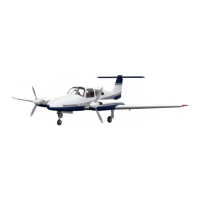
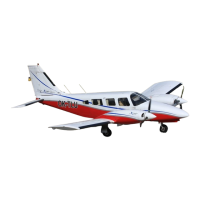
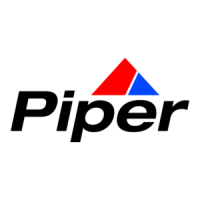
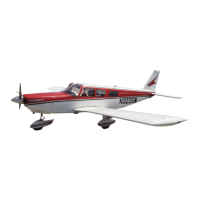




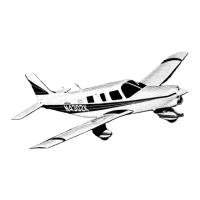
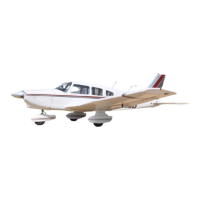
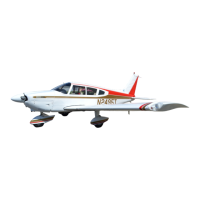
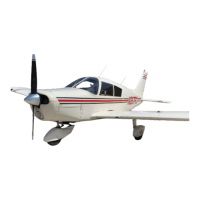
